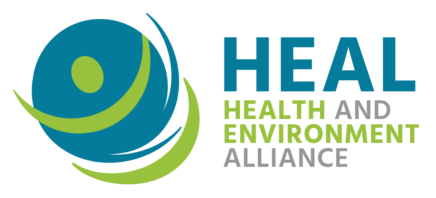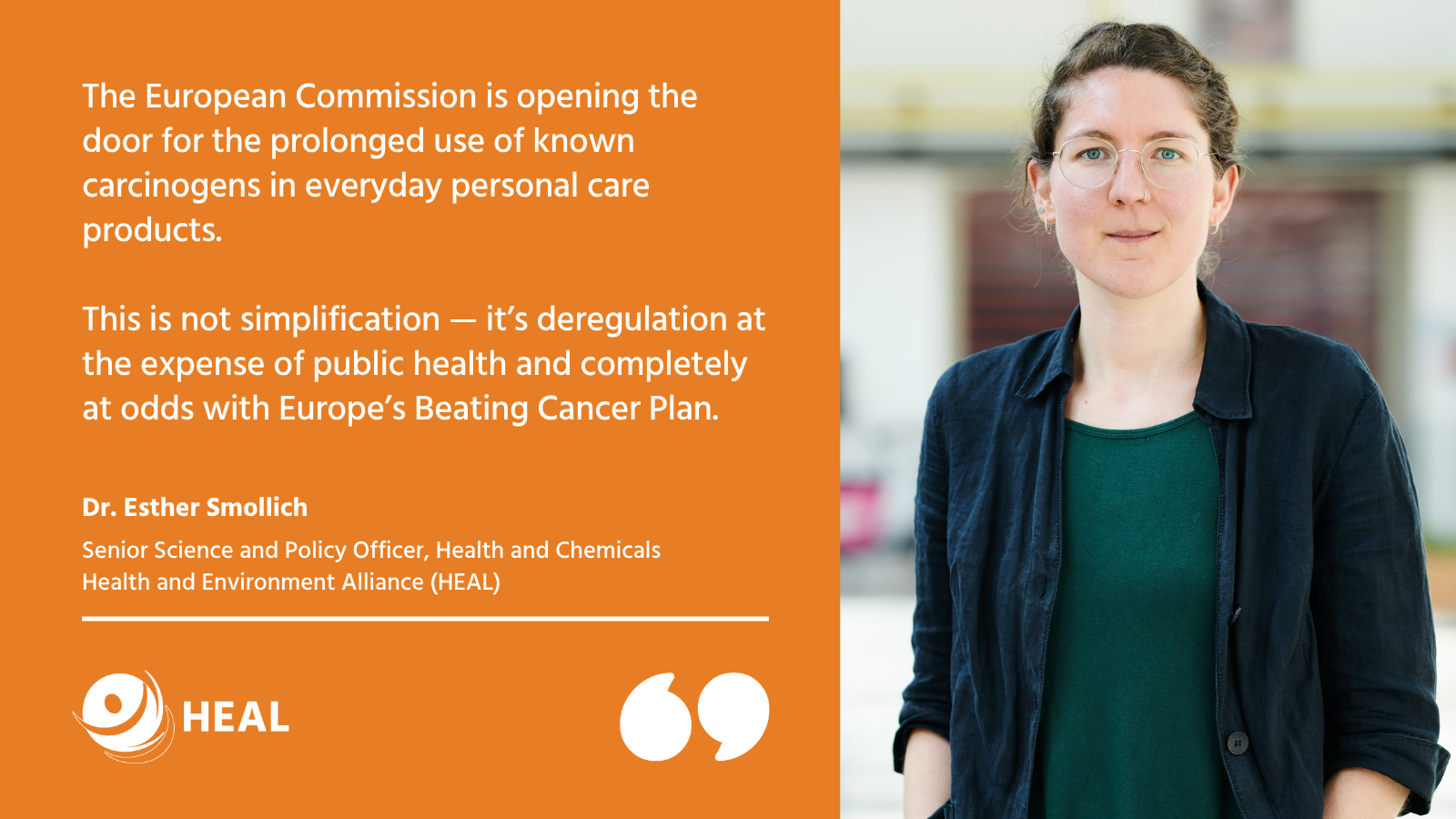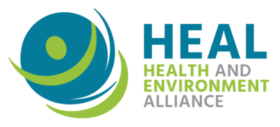Today’s publication of the European Commission’s chemicals omnibus confirms serious concerns: if pushed through the proposal will significantly weaken protections in the Cosmetic Products Regulation, allowing the prolonged use of carcinogens and other harmful chemicals in personal care products.
The widespread production and use of PFAS chemicals creates a huge health, environmental, and financial burden on society, the costs of which are mostly paid for by individuals, local communities and authorities instead of the actual polluters. A new website by the Health and Environment Alliance (HEAL) sheds light on five cases of PFAS pollution affecting communities across Europe and provides resources for concerned citizens and health professionals to take action [1].
Short for per- and polyfluoroalkyl substances, PFAS are a family of thousands of chemicals that include PFOA, PFOS, GenX as some of its most infamous members. It is estimated that some 17,000 sites all over Europe are contaminated by PFAS and that 12,5 million Europeans are living in communities with drinking water polluted with these chemicals, exposure to which has been linked to different types of cancer, thyroid disease, immune dysfunction and hormone disruption [2, 3].
HEAL’s new website offers a deep dive into five cases of affected communities dealing with the real-life consequences of living with PFAS pollution – the tip of a large contamination iceberg that has never been documented in detail. The website covers these cases in detail, and zooms in on local communities’ efforts to seek accountability and remedies as well as known local and national responses to date. Importantly the site also offers resources for affected communities and health professionals to get informed and take action at their respective levels.
- In Veneto Italy, the drinking water of over 350,000 people was contaminated with PFOA.
- In Antwerp, Belgium, excessive PFOS was found in air, soil, and blood of people living nearby a 3M chemical plant.
- In Dordrecht, the Netherlands, the air and water of 750,000 people was found to be contaminated with PFOA and GenX.
- In Ronneby, Sweden, the drinking water of local residents was contaminated with several PFAS by fire fighting foam used in a military airport base.
- In Korsør, Denmark, cattle and farming land was contaminated with PFOS and PFHxS.
“The widespread use of PFAS has created an irreversible toxic legacy of pollution, and individuals and local communities are footing the health, societal and financial bill instead of the actual polluters,” explains Natacha Cingotti, Health and Chemicals Programme Lead at HEAL.
“Next to supporting a highly protective EU-wide restriction, we urge European and national decision-makers to take urgent measures for clean-up, polluters’ legal and financial accountability and adequate long-term health monitoring and follow-up for affected communities”.
Removing PFAS from the environment is both time consuming and costly, and in some cases impossible. The cost of environmental remediation has been estimated to be between 821 million to 170 billion Euros for all 31 EEA countries and Switzerland alone [4]. Exposure to PFAS chemicals also comes with a major health bill: the estimated annual health costs range between 52 and 84 billion Euros for Europe [5].
In February 2023, the EU Chemicals Agency (ECHA) published the draft proposal for an EU-wide restriction on the production and use of thousands of PFAS chemicals, with a view to restricting such substances found in water, food, homes and as a consequence in nearly everyone’s body [6]. Next to this important effort, HEAL’s website illustrates how the remediation and guarantees for adequate health follow-ups for local communities must remain at the priority of the agenda of European and national decision-makers.


